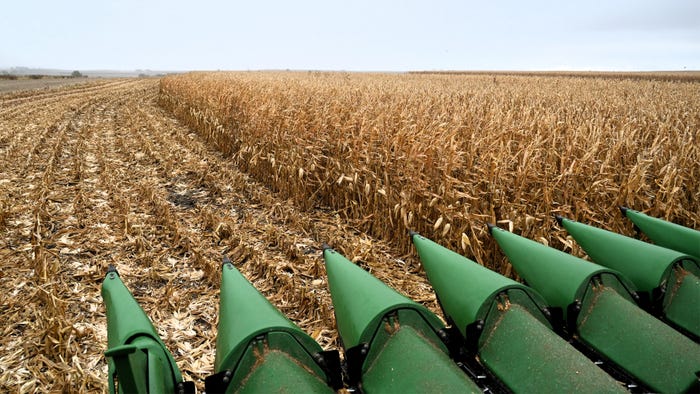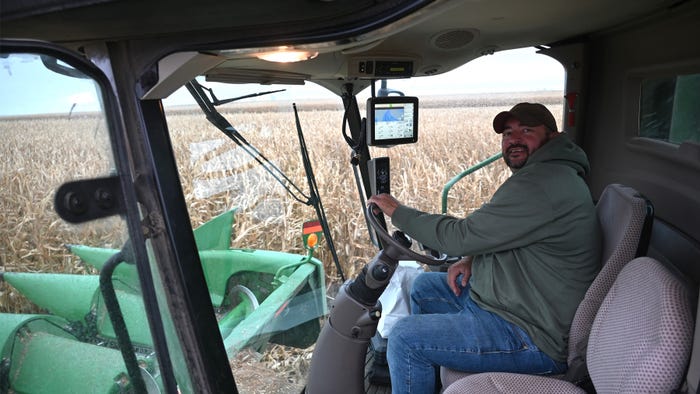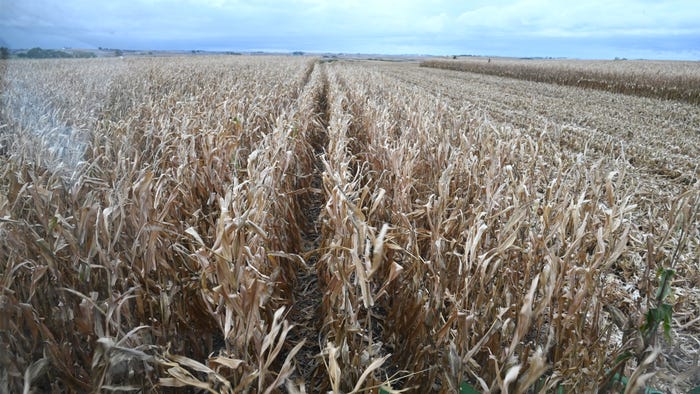October 20, 2023

A pound of nitrogen equals a bushel of corn is how farmers have looked at nitrogen fertilizer in the past, but with the advancements in nitrogen use and measurements, that may not be the case anymore.
On Kevin Ross’ farm in southwest Iowa, he no longer uses this train of thought. And with the help of his agronomist, he is learning how to better manage his acres.

IMPACT ON YIELDS: The timing of nitrogen fertilizer application can make an impact on corn yields on the Ross farm near Underwood, Iowa.
“Timeliness of the applications is so important. We’ve tried to manage our corn acres in different ways,” Ross says. “The soil, hybrid genetics and organic matter all play a role in our potential yields. When we apply the product can also have an impact on how well it works.”
Ross’ agronomist, Steve Killpack with Acumen Agronomics, uses data from each farm to determine what amount of nitrogen to use, which can be different within a field. “We have to target the optimum rate, but it’s variable in each field, with factors being involved including organic matter levels, pH of the soil, soil texture, historical data from the field and how other crops have performed in the same spot,” he says. “Besides being an agronomist, I’m a farmer. I want to know why a crop is behaving the way it is and how we can get the maximum ROI [return on investment] while doing what’s right for the environment.”
Seeding rate will have an impact in the field as well. Killpack says, “For some farmers, it’s easiest to explain by comparing their seeding rate in the field to stocking rate for cattle in a pasture. You don’t want to put too much out there or the performance will go down.”

VARIABLE HARVEST: Iowa farmer Kevin Ross says yields are variable on his farm due to drought and some pest problems.
Once the seed is in place, the nitrogen availability to the growing plant can be different, even within a field. This is when variable rate comes into play. Tissue testing of the plant will give the information of what is needed for the plant to thrive, and then a plan can be made throughout the growing season for nitrogen applications.
Tools can help determine rates
Richard Roth, Iowa State University associate professor of agronomy, says nitrogen can be extremely mobile in the soil and can even be lost in the system, which makes it hard to predict how much to apply before the growing season. He says it’s best to wait until the crop is in the ground and growing to know the exact needs of the crop.
“In the Midwest Corn Belt states, many farmers and agronomists will use the Corn Nitrogen Rate Calculator to determine the amount of nitrogen to apply,” Roth says. This calculator was developed with the primary goal of being able to have nitrogen rate guidelines on a regional basis, and a secondary goal of helping farmers find the most profitable nitrogen rates for corn production.
Roth says two different kinds of rates can be calculated — the agronomic nitrogen rate and the economic nitrogen rate. The agronomic rate is an estimate of the nitrogen that needs to be applied to reach maximum yield. The economic rate is the nitrogen rate needed to optimize the economic return to the grower.

NEXT GENERATION: Kevin Ross hopes his sons Carver, Hollis, Axten and Hudson will learn a lot about farming while growing up and one day will return to the family farm.
“Generally, the economic nitrogen rate is a little lower than the agronomic nitrogen rate, and the yield is also a little lower,” he adds. “This tool is unique to the Midwest, while other states may use a different calculator.”
The use of field maps is another tool to help know the in-season needs of plants and is something Killpack uses for his customers, too. “Using a drone to fly the field and see the conditions of the plants, mostly based on plant color, can help determine plant health,” Roth says. “Continual data collection in this manner can help make more accurate decisions.”
The Iowa Nitrogen Initiative is working to develop tools for farmers to use to help make more precise decisions on nitrogen rates. The state-funded Iowa State University project is collecting data from farmers across the state to help build models for more localized nitrogen rate guidance.
The Iowa initiative is running 270 on-farm trials across 72 different private farms in 2023, collecting information on variable-rate fertilizer application and GPS-based yield monitoring. Historical yield data is also considered on the farms.
“The team working on this project plans to narrow the gap between everyone involved in nitrogen application decisions to understand the agronomics,” Roth says. “Researchers plan to make decision-making tools for farmers to use that will be more specific for a certain area.”
How do cover crops make a difference?
While cover crops have many benefits for building organic matter and preventing erosion, Roth says the most prevalent species used in Iowa, cereal rye, doesn’t reduce the amount of nitrogen needed.
“Cereal rye is a tricky animal. It can be used as a tool to prevent nitrogen lost through erosion but doesn’t reduce the amount of nitrogen fertilizer needed on corn ground,” he says. “Other species, especially legumes, will behave differently with nitrogen needs.”
On Ross’ farm, he says they are still in trial mode when it comes to cover crops. He’s thankful for the state programs to assist in planting and will always use cover crops on the acres where he cuts silage to help rebuild the organic matter in the soil, and add cover on top of the ground to give those fields a better head start with moisture for the following year. Expanding the use of cover crops on his farm will be done if it will provide agronomic benefits.

KNOW CORN’S NEEDS: It is important for farmers to understand that the needs on their farm will vary even within a field. Having the help of a good agronomist can improve yield potential.
Nitrogen inhibitors, soil activators and other newer products are tools many farmers are using to be able to reduce the amount of nitrogen fertilizer needed. The key to these products is to follow the label instructions as each can be different, especially when they have living microorganisms present. Roth suggests starting with a smaller spot of the farm to see how successful it is.
Making sure a product or practice works agronomically and economically is the key to success when it comes to nitrogen usage. “Nitrogen and fertilizer will always be a factor in raising crops, but how we use it will change,” Ross concludes. “Customized agricultural innovations will make a difference in our yields now and that which my four sons use in the future.”
Factors affecting N rate needs
Many factors are taken into account when growing crops. When it comes to determining nitrogen fertilizer amounts needed, the key contributors are:
Weather
Soil texture
Soil pH
Soil fertility
Historical field data
Seed genetics
About the Author(s)
You May Also Like






